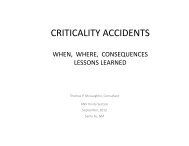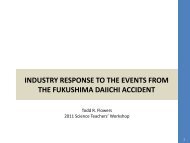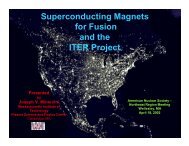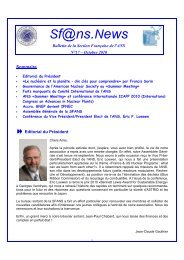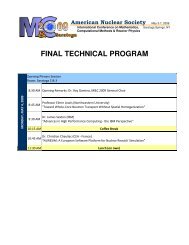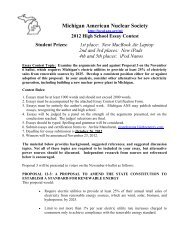DOE-NE-0088
DOE-NE-0088
DOE-NE-0088
Create successful ePaper yourself
Turn your PDF publications into a flip-book with our unique Google optimized e-Paper software.
These elements had about half the atomic mass<br />
of uranium. In previous experiments, the<br />
leftover materials were only slightly lighter<br />
than uranium.<br />
Hahn and Strassman contacted Lise Meitner in<br />
Copenhagen before publicizing their discovery.<br />
She was an Austrian colleague who had<br />
been forced to flee Nazi Germany. She worked<br />
with Niels Bohr and her nephew, Otto R.<br />
Frisch. Meitner and Frisch thought the barium<br />
and other light elements in the leftover<br />
material resulted from the uranium splitting —<br />
or fissioning. However, when she added the<br />
atomic masses of the fission products, they did<br />
not total the uranium’s mass. Meitner used<br />
Einstein’s theory to show the lost mass<br />
changed to energy. This proved fission<br />
occurred and confirmed Einstein’s work.<br />
The First<br />
Self-Sustaining<br />
Chain Reaction<br />
In 1939, Bohr came to America. He shared with<br />
Einstein the Hahn-Strassman-Meitner discoveries.<br />
Bohr also met Fermi at a conference on<br />
theoretical physics in Washington, D.C. They<br />
discussed the exciting possibility of a selfsustaining<br />
chain reaction. In such a process,<br />
atoms could be split to release large amounts<br />
of energy.<br />
Scientists throughout the world began to<br />
believe a self-sustaining chain reaction might<br />
be possible. It would happen if enough<br />
uranium could be brought together under<br />
proper conditions. The amount of uranium<br />
needed to make a self-sustaining chain reaction<br />
is called a critical mass.<br />
5




